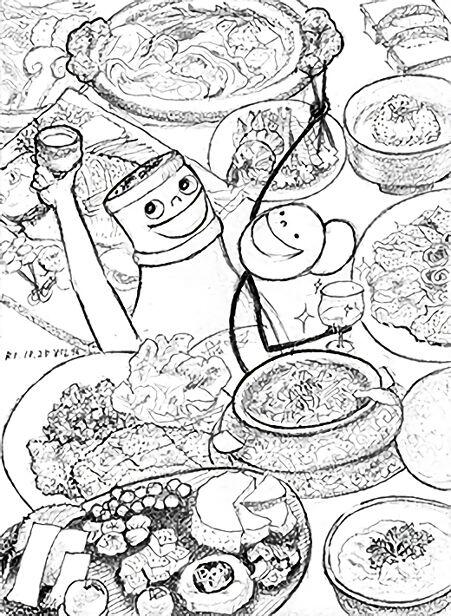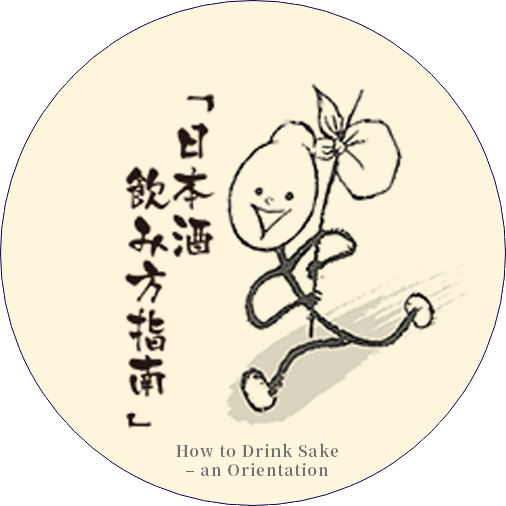| Yeast |
“We have seen various pairings of sake with ingredients like meat, fish, vegetables and fruit. Do pairings also differ per type of cuisine?” |
| Kimoto |
“Good you noticed, Yeast. In case of Japanese, Western and Chinese food, both condiments and ways of preparing are different. On top of that, the way of thinking about taste and good pairings is also different.” |
| Yeast |
“Now that you mention it, there is a big difference between Japanese cuisine with its preference for the original taste of the ingredients and seasonality, and importance of dashi soup stock and the skillful handling of the kitchen knife on the one hand, and Western cuisine which utilizes various ingredients and techniques by hours long cooking and baking on the other hand.” |
| Kimoto |
“The way of eating also is different. In the case of Japanese food, we eat the side dishes at the same time as the rice. When both of these blend in the mouth it results in a delicious taste. This is called ‘a taste in the mouth.’ Sake also blends in the mouth with the remaining food and the resulting harmony is essential. In contrast, in the West dishes are consumed one plate at a time, and wine is drunk sip by sip after the food has been swallowed. So the main thing here is the pairing between the lingering taste of the food and the aroma of the wine.” |
| Yeast |
“Kimoto, in the world of Japanese cuisine I often hear the expression that sake shouldn’t ‘interfere with the food.’ Such a way of thinking makes me a bit sad. Much more attractive is the way of thinking in French cuisine that the ‘mariage’ between food and wine produces a wonderful third taste.” |
| Kimoto |
“Yes, the Japanese way of saying is rather modest, but it’s true that the umami of sake has the wonderful effect of prolonging and amplifying the taste of food. Therefore it is good to have sake with the same quality of umami as the food, because that also produces a wonderful ‘mariage.’ Wine cleanses the tongue after the fatty food in Western cuisines, and allows you to enjoy the match between the remaining aromas. This is different from sake which becomes one with the food itself.” |
| Yeast |
“That’s very interesting! But isn’t it true that the Japanese and Western cuisine have influenced each other and gradually grown closer?” |
| Kimoto |
“Exactly! The Japanese cuisine has started using Western ingredients and methods of preparation, so its range has become wider. And under the influence of Japanese cuisine, in Western food oil and fat have been reduced, and the taste has become lighter with more emphasis on the original taste of the ingredients. There are more and more cases in which the heavy wines of the past don’t fit anymore and where sake fits better.” |
| Yeast |
“Ahem! In the case of Japanese food, sake with a firm umami now fits better than light and dry sake, and in the case of Western food there is a demand for elegant but also powerful sake. So Daishichi’s kimoto sake is very popular!” |
| Kimoto |
“We are grateful for that. Recently, sake is also being served more and more with Chinese food. I’m now studying how to pair sake with a full course Chinese dinner.” |
| Yeast |
“As Chinese food often has a rich umami, Daishichi must fit well.” |
|
 |
| Kimoto |
“Yes, with rich-tasting food based on soy sauce, a strong, matured sake makes a good pairing. Rakutenmei and Junmai Kimoto Classic are excellent matches.” |
| Yeast |
“I’m fond of dim sum. Which sake would fit to dim sum?” |
| Kimoto |
“In the first place warm Junmai Kimoto! And Kaiden (Masakura) fits well to the more sophisticated kinds of dim sum. Another sake which fits very well to Chinese food is Kijoshu. It generally fits well to foods with a dark-looking sauce as it amplifies the deliciousness.” |
| Yeast |
“Really? Is there any other sake which makes a good pairing with Chinese food?” |
| Kimoto |
“Our Silky Sparkling Kimoto Umeshu. Thanks to its fresh acidity, it makes a good pairing.” |





